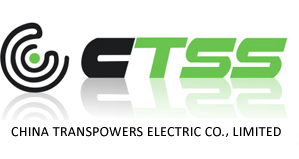Home >> News Center
Protection for moving cables announces igus RX tube proves itself in a test with real conditions
2013-8-7
A laboratory test, carried out under hard conditions, for safely moving cables in the area of mechanical engineering shows tightness against chips
The plastic energy tube RX, from igus, successfully resists chips when put through hard operation. This test result concludes after a defined period of 100,000 double strokes and a steady feed of metal chips with different sizes. Comparisons highlight that statements about chip tightness of energy tubes can only be made on the basis of test that simulate real operating conditions.
If moving cables in the workspace of lathes, milling and sawing machines need to be protected, energy chains need to be chip tight inwardly and simultaneously guide the cables with low abrasion. For this purpose, igus has already developed its first foldable plastic energy tube R68. The latest energy tube RX now offers comprehensive protection against chips of any size.
A test is not equal to any other test
In order to be able to make statements about the tightness of energy tubes, the tubes need to be extensively tested. Here the IP classifications serve as an indicator. For over 10 years now igus continues to check energy tubes in the company-owned test laboratory in Cologne. There are several advantages of the igus test series: One being that the test cycles take place among real environmental conditions. To make statements about the real tightness of an energy tube, its subsequent use needs to be simulated precisely.
Simulation close to reality: 100,000 double strokes among impacts of chips
For this reason, igus has developed a standardized test to move energy tubes over 100,000 double strokes. At the same time, a defined load of chips of different sizes is periodically poured on the energy tube again and again. The principle is comparable to a washing machine drum. At the end of the cycles it is analysed how many grams of chips can get into interior space. The result was that only 0.23 grams of chips were in
RX tube after 100,000 double strokes with a feed of 1,000 grams of metal chips. This is equal to 0.023 percent.
The rounded outside profile lets chips fall off
Comparative tests with other manufacturers' energy chains show a much higher volume of chips in the inside of the tube. The reason for the better result of the RX tube is its rounded profile. On its smooth and convex outer contour the chips simply fall out of on contact with the surface. Apart from that, igus verifies that the chips are deposited in the stop system of the energy tube. This could lead to a change of the bending radius resulting in the tube not moveing safe and crashing against projecting edges at the worst. The RX tube offers best protection due to especially smooth contours and tight production tolerances - no chips got between the stoppers during the test. The results from igus show that tests among real conditions need to be performed to get reliable statements about the chip tightness of an energy tube in operation.


 Hydro Turbine Generator Units
Hydro Turbine Generator Units
